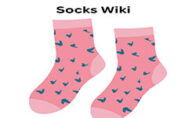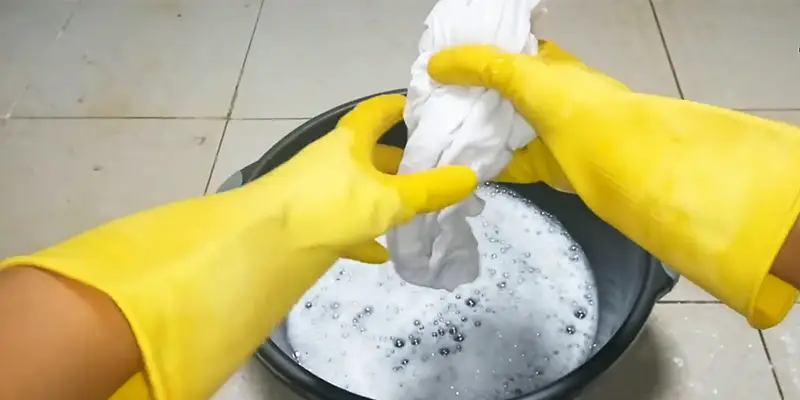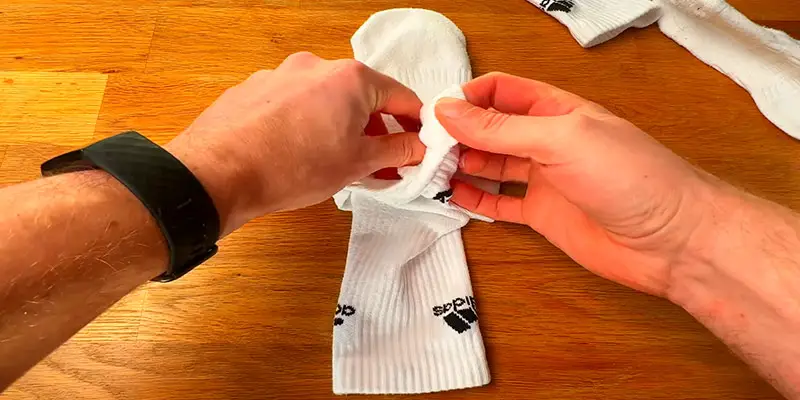Hi, I'm Christopher Bevans, the creator of SocksWiki.com. With a background in fashion design and a passion for innovation, I’m here to share my knowledge on socks from troubleshooting tips to detailed buying guides. I believe the right pair of socks can make all the difference, and through this site, I aim to help you find the perfect fit for every occasion.
Hi, I'm Christopher Bevans, the creator of SocksWiki.com. With a background in fashion design and a passion for innovation, I’m here to share my knowledge on socks from troubleshooting tips to detailed buying guides. I believe the right pair of socks can make all the difference, and through this site, I aim to help you find the perfect fit for every occasion.
Knowing why socks get hard after washing can help in maintaining the softness and comfort of socks. Many people are surprised when their once-soft socks turn stiff, rough, or crunchy over time.
This change often results from common laundry mistakes or overlooked factors that gradually affect the fabric. From using too much detergent to exposure to hard water, several everyday habits may be ruining your socks without you realizing it.
In this guide, we’ll break down 8 reasons why socks get hard and what you can do to prevent it, so your socks stay cozy, wearable, and feeling like new.
What Does “Hard Sock” Mean? Hard Socks Meaning
Hard socks meaning or the term “hard sock” typically refers to a sock that has become stiff and rigid due to various factors such as sweat, bodily oils, detergent residue, or mineral deposits from hard water.
Improper drying techniques and environmental conditions, like humidity or dryness, can also contribute to a sock’s hardness. Additionally, the natural wear and tear of fabric over time can lead to stiffness.
A “hard sock” is generally less comfortable to wear, lacking the softness and flexibility of a fresh or properly maintained sock. Addressing these issues involves proper washing, rinsing, drying, and storage practices.
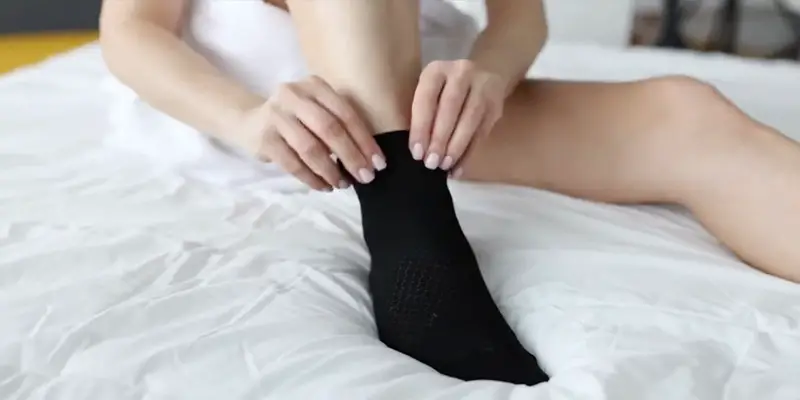
8 Reasons Why Socks Get Hard?
Socks can get hard due to eight reasons, which often involve a combination of environmental factors, material properties, and usage habits.
Here are the 8 key reasons why socks become hard:
1. Sweat and Bodily Oils
When we wear socks, especially for long durations or during physical activities, our feet produce sweat and natural oils.
The moisture from sweat can seep into the sock fibers, and the salts and acids in sweat can interact with the fabric.
Over time, as the socks dry, these substances can crystallize within the fibers, leading to stiffness.
Additionally, the oils from our skin can create a layer that, once dried, makes the socks feel less flexible.
Regular washing helps to mitigate this buildup, but if not done thoroughly, the remnants can accumulate, causing socks to harden.
2. Detergent Residue
Using excessive amounts of detergent or not properly rinsing socks during the washing process can leave detergent residues in the fabric.
These residues can act as a binding agent, causing the fibers to stick together and feel stiff. Over time, repeated washing without adequate rinsing exacerbates this issue, leading to socks that feel hard and less comfortable.
It’s essential to follow the recommended detergent dosage and ensure thorough rinsing to prevent buildup.
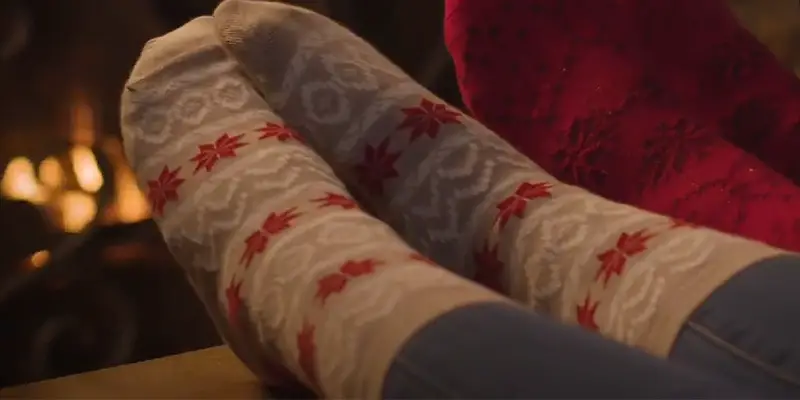
3. Mineral Deposits from Hard Water
Hard water, which contains high levels of minerals like calcium and magnesium, can leave deposits on clothing during the washing process.
When socks are washed in hard water, these minerals can accumulate within the fibers. As the socks dry, the mineral deposits can cause the fabric to feel stiff and rough.
Using a water softener or adding vinegar during the rinse cycle can help to reduce mineral buildup, keeping the socks softer.
4. Fabric Composition
The materials used to make socks significantly impact how they respond to washing and wearing.
Natural fibers such as cotton and wool are prone to becoming stiffer after drying, especially if they aren’t treated with fabric softeners.
Cotton, for instance, can absorb moisture and oils, which can cause it to stiffen when it dries.
Synthetic fibers like polyester and nylon, while generally more resistant to stiffness, can still become hard if subjected to buildup from sweat, oils, or detergents.
Blended fabrics can exhibit a combination of these behaviors, depending on the ratio of natural to synthetic fibers.
5. Improper Drying Techniques
The way socks are dried can greatly affect their texture. Air-drying socks in direct sunlight or high heat can cause the fibers to shrink and stiffen.
Similarly, using a high heat setting on a dryer can cause synthetic fibers to melt slightly or natural fibers to lose their elasticity.
It’s advisable to air-dry socks in the shade or use a low heat setting on the dryer to maintain their softness. Additionally, drying socks with other soft items like towels can help prevent stiffness.
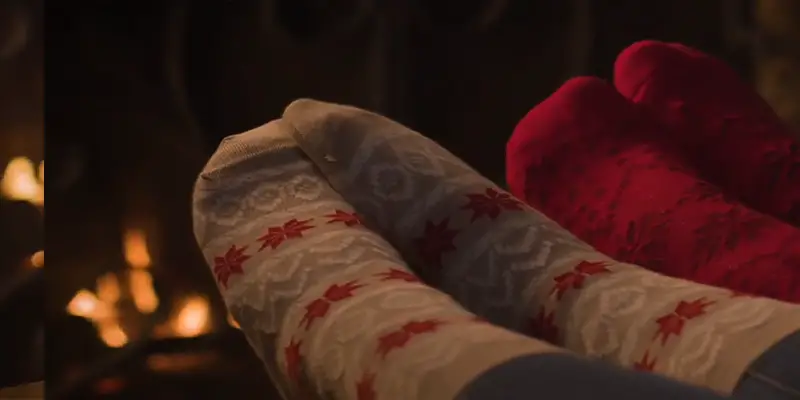
6. Lack of Fabric Softener
Fabric softeners are designed to coat the fibers in clothing, making them feel smoother and more flexible. Without the use of fabric softener, socks can come out of the wash feeling stiff and rough.
Fabric softeners work by reducing static cling and preventing fibers from sticking together, which can contribute to a softer feel.
However, it’s important to use fabric softeners in moderation, as overuse can lead to buildup that might also contribute to stiffness.
7. Environmental Factors
The environment in which socks are stored can affect their texture. Storing socks in a humid or damp environment can lead to the growth of mildew or mold, which can make the fabric feel stiff and unpleasant.
On the other hand, storing socks in very dry conditions can draw out any remaining moisture, making them feel harder. It’s best to store socks in a cool, dry place with good air circulation to maintain their softness.
8. Wear and Tear
Over time, the repeated cycle of wearing, washing, and drying can break down the fibers in socks. This wear and tear can lead to the loss of the original softness and elasticity of the fabric, causing it to feel stiff.
As the fibers break down, they can also become more prone to absorbing sweat, oils, and detergent residues, which further contribute to stiffness.
Replacing socks periodically and caring for them properly can help prolong their softness and comfort.
Why Are Boys’ Socks Hard?
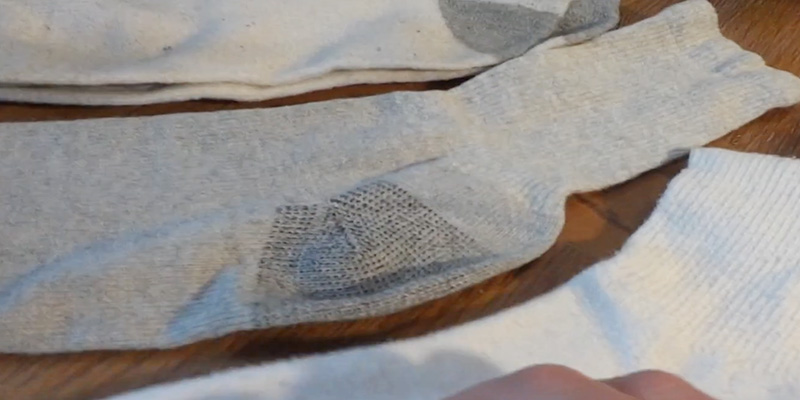
When you’ve wondered why boys’ socks often feel stiff, thick, or tough, you’re not alone. Many parents and individuals notice this difference compared to other socks.
Here are some key reasons why boys’ socks tend to be harder and more durable:
Stronger Fabric for Durability
Boys are typically more active, running, jumping, and playing sports. Manufacturers use thicker, tightly woven fabrics like cotton blends, polyester, and spandex to ensure the socks withstand rough use.
Reinforced Areas for Extra Protection
Many boys’ socks come with reinforced heels and toes to prevent holes and wear. These reinforced sections use denser stitching, making them feel harder than regular socks.
Moisture-Wicking and Compression Features
Athletic and everyday socks for boys often include moisture-wicking materials and mild compression to support feet during sports or long wear. This results in a firmer texture compared to softer, more relaxed socks.
Pre-Treated or Stiff New Fabric
Some new socks feel hard because of the manufacturing process. Factories sometimes apply treatments for stain resistance, shrink prevention, or antibacterial properties, making them feel stiffer initially. However, after a few washes, they usually soften.
Thicker Design for Warmth and Protection
For colder climates, boys’ socks are often designed with extra padding for warmth. These thermal or cushioned socks naturally feel harder due to their layered structure.
How to Soften Boys’ Hard Socks
When you find boys’ socks too stiff, try:
- Washing them with fabric softener
- Using vinegar in the wash to break down stiffness
- Air-drying instead of using a dryer for extra softness
How to Prevent Socks From Getting Hard?
Preventing socks from becoming hard involves a combination of proper washing techniques, appropriate drying methods, and careful storage.
Here are the effective tips and strategies to keep your socks soft and comfortable:
Proper Washing Techniques
Use the right amount of detergent to avoid residue build-up in the fibers, which can cause stiffness.
Ensure that socks are thoroughly rinsed to remove all detergent residues; a second rinse cycle can be beneficial, especially if you have hard water.
Washing socks in cold or warm water, rather than hot, can help preserve the fibers and prevent them from becoming stiff.
Additionally, wash socks separately from heavy or coarse items like jeans or towels, which can cause abrasion and make the socks harder.
Use Fabric Softener
Adding liquid fabric softener during the rinse cycle coats the fibers and keeps them soft. However, use it sparingly to avoid buildup. Fabric softener sheets can also help reduce static and soften socks if you use a dryer.
Address Hard Water Issues
Using a water softener in your washing machine helps prevent mineral deposits on your socks if you live in an area with hard water.
Adding a cup of white vinegar to the rinse cycle can also help dissolve mineral deposits and soften the fabric.
Proper Drying Techniques
Air-drying socks by hanging them in a shaded, well-ventilated area avoids the brittleness caused by direct sunlight.
If you use a dryer, choose a low heat setting to prevent damage to the fibers, as high heat can cause socks to shrink and stiffen.
Drying socks with softer items like towels can help reduce stiffness caused by tumbling.
Storage and Care
Keep socks in a cool, dry place to avoid moisture build-up, which can lead to mildew and stiffness.
Regularly rotate your socks to ensure even wear and prevent excessive buildup of sweat and oils in specific pairs. Replace worn socks when they start to lose their softness and elasticity.
Regular Maintenance
Pre-treat any stains or heavily soiled areas before washing to prevent buildup that can cause stiffness. Be gentle when putting on and taking off socks to prevent stretching and damaging the fibers.
Choose the Right Socks
Opt for high-quality socks made from materials known for their softness and durability, such as bamboo, merino wool, or cotton blends with a small percentage of synthetic fibers for elasticity.
FAQs
Why do my socks feel stiff after washing?
Socks can feel stiff after washing due to detergent residue, mineral deposits from hard water, and improper rinsing.
Using too much detergent or not rinsing thoroughly can leave behind residues that cause stiffness.
How does sweat affect the softness of socks?
Sweat contains salts and acids that can be absorbed by the sock fibers. When the socks dry, these substances can crystallize and harden, making the fabric stiff and uncomfortable.
Can the type of fabric affect how hard socks get?
Yes, natural fibers like cotton are more prone to becoming stiff after drying, especially if not properly rinsed, whereas synthetic fibers like polyester tend to remain more flexible but can still become hard due to buildup.
Does using a dryer make socks harder?
Using a high heat setting on a dryer can cause socks to become stiff, as it can shrink the fibers or cause synthetic materials to lose their elasticity.
How can I prevent my socks from getting hard?
To prevent socks from getting hard, use the correct amount of detergent, ensure thorough rinsing, employ fabric softeners, and avoid high heat drying. Storing socks in a cool, dry place also helps maintain their softness.
Why Do My Socks Get Hard After I Wear Them?
Socks become hard after wearing due to the accumulation of sweat, natural oils, and dirt from your feet, which can crystallize and stiffen the fabric as they dry.
Wrap Up
Socks harden due to a combination of sweat and bodily oils, detergent residue, mineral deposits from hard water, and fabric composition. Improper drying techniques, lack of fabric softener, environmental conditions, and regular wear and tear also contribute.
To maintain softness, it’s crucial to wash socks with the right amount of detergent, rinse thoroughly, and use fabric softeners appropriately.
Employing proper drying methods and storing socks in suitable environments can also help.
By understanding these factors and taking preventative measures, one can ensure that their socks remain comfortable and soft for longer periods, enhancing overall foot comfort and hygiene.

Hi, I'm Christopher Bevans, the creator of SocksWiki.com. With a background in fashion design and a passion for innovation, I’m here to share my knowledge on socks from troubleshooting tips to detailed buying guides. I believe the right pair of socks can make all the difference, and through this site, I aim to help you find the perfect fit for every occasion.
- Latest Posts by Christopher Bevans
-
Socks Care Label Symbols and Meanings: 5 Explained
- -
Smartwool vs Darn Tough Socks: Hiking, Running, Women & Men
- -
Socks Storage Ideas: 10 Real-Life DIY Ideas
- All Posts
